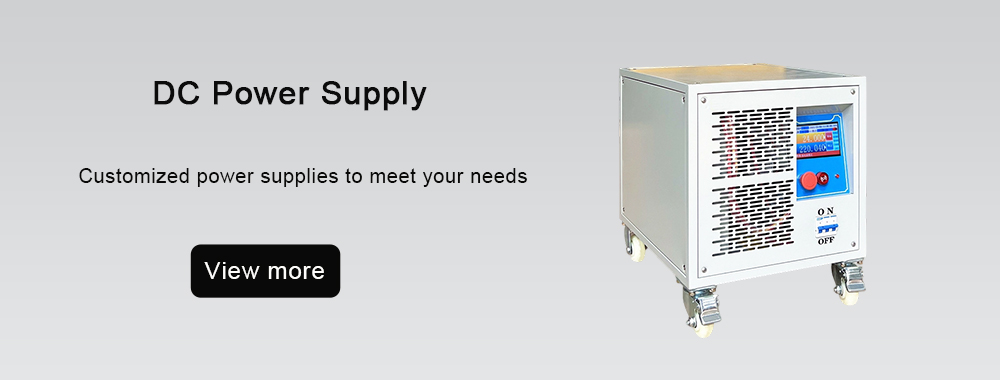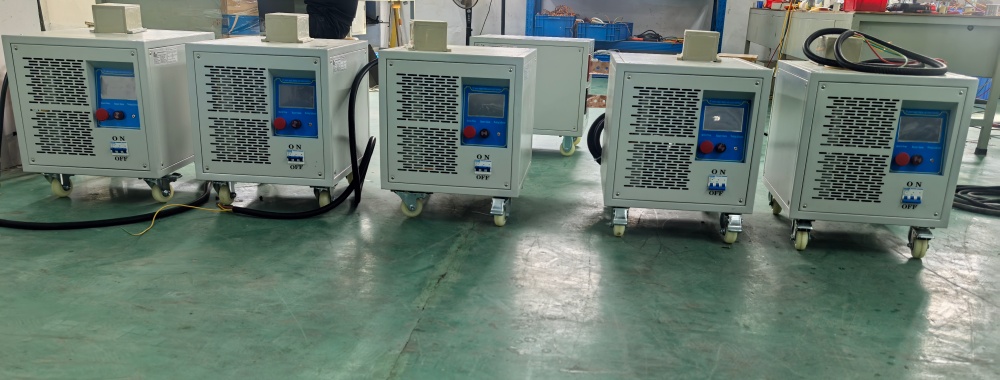Electroplating is an electrolytic process, and the power supply will inevitably have a direct impact on the electroplating process. Therefore, the electroplating power supply plays a crucial role in the electroplating process. The application of electroplating power supplies and low-ripple rectifier power supplies in the electroplating industry helps electroplating professionals select rectifier power supplies, resolve electroplating problems, and improve electroplating quality.
Basic Types of Rectifiers
Silicon Rectifiers: Silicon rectifiers have a long history of use and mature technology, and are currently the mainstream rectifier product. Various rectifier circuits produce pulsating DC power, not pure DC. To compare the amount of ripple, the ripple factor is generally used to represent it. The smaller the value, the less AC component, and the closer it is to pure DC. Different rectifier circuits have different ripple factors. Their order of magnitude is as follows: three-phase half-wave rectifier, three-phase full-wave bridge rectifier, or six-phase double-reverse star rectifier with balancing reactors. Thyristors (SCRs) are common thyristor rectifiers that adjust the average DC output by varying the conduction angle of the thyristor. The thyristor outputs a discontinuous pulse wave, and its ripple factor is controlled by the conduction angle, resulting in a higher output ripple factor than conventional silicon rectifier circuits.
Switching Power Supplies
Switching power supplies combine the waveform smoothness of silicon rectifiers with the convenient voltage regulation of thyristor rectifiers. They offer high current efficiency and minimal size. High-power switching power supplies ranging from thousands to tens of thousands of amperes have entered practical production. Switching power supplies have reached audio frequencies, making it easier to achieve low-ripple output through filtering. Furthermore, current and voltage regulation are easier to implement. Therefore, switching power supplies are the future development direction.
Pulse Power Supply Equipment
Pulse power supplies are primarily controlled by embedded single-chip computers and, in addition to pulse output, typically possess various control functions.
1. Automatic current and voltage regulation. Traditional silicon rectifiers cannot automatically stabilize current or voltage, fluctuating with grid voltage fluctuations. Pulse power supplies, on the other hand, possess highly precise automatic regulation, allowing their output voltage to remain virtually constant. The automatic adjustment function of a pulse power supply generally has two modes: 1. Constant current and voltage limiting mode; 2. Constant voltage and current limiting mode.
2. Multi-stage operation mode. Aluminum anodizing or hard chrome plating often requires reverse electrolysis, high current surges, and stepped power supply operations. A pulse power supply with multi-stage operation mode only requires pre-setting and automatically adjusts to the desired sequence during production. This feature is particularly useful for hard chrome plating, with each time period adjustable from 0 to 255 seconds.
3. Bidirectional pulse function. The positive and negative pulse frequency, duty cycle, and forward and reverse output time can all be adjusted independently, providing flexibility and convenience. Combined with the hard chrome plating process, coatings with varying physical properties can be achieved.
4. DC superposition function. While outputting positive and reverse pulse currents, the same power supply also outputs a pure DC component, further expanding the application range and applications of pulse power supplies.
The Impact of Electroplating Power Supply on the Electroplating Process
DC power supply waveforms have a significant impact on electroplating quality. Among all electroplating processes, chrome plating is one of the most affected by power supply waveforms. Chrome plating must utilize a low-ripple DC power supply. Otherwise, the brightening range is narrow, and the deposit is prone to mottling and graying. When using high-efficiency hard chrome plating additives, microcracks can form in the chromium layer. Excessive output ripple can result in loose and uneven crack distribution, failing to achieve the required crack count.
Bright copper plating follows a common pattern: as observed on Hull cell specimens, the brightening and leveling properties of the deposit improve in areas with higher cathode current density; lower current density results in poorer brightening and leveling properties. Achieving uniform brightening results from expanding the brightening range in low current density areas while reducing the brightness in high current density areas. In practice, even with the same formulation, process conditions, and brightener, significant differences in brightening and leveling properties and brightening range can occur. This is largely related to the output ripple factor of the DC power supply used. Bright nickel plating does not require as high a rectifier output ripple factor as chromium plating and bright acid copper plating. However, it does require a standard low-ripple DC power supply to ensure the quality of the bright nickel plating layer and the subsequent chromium plating.
Sulfate bright acid tin plating is inherently challenging to achieve. This is due to the ease of impurities introduced and difficult to handle during large-scale production (including tetravalent tin ions), the narrow temperature range, and the fact that most current brighteners are suboptimal. This process also requires a low-ripple DC power supply, otherwise similar problems as bright acid copper plating may occur.
Battery temperature rise: DC power supplies with high ripple factors and pulsed power supplies tend to accelerate temperature rise. The larger the ripple factor, the greater the harmonic component, which can generate significant ohmic heat and accelerate bath temperature rise. Using smooth DC power helps maintain a low bath temperature. Impact of rectifier load rate on ripple factor: The closer the operating current is to the rectifier's rated current, the smoother the waveform. When selecting a rectifier, based on process requirements, choose one with a rated output power supply voltage close to the maximum required value to ensure that the rectifier power supply output ripple factor remains low.
We focus on the research and development, sales and services in the fields of DC-DC power modules, AC-DC rectifier modules, DC-AC inverters, AC power supplies, DC power supplies, LED power supplies, chargers, rectifier systems, etc., providing personalized, efficient, reliable and cost-effective power solutions for all walks of life.
Thank you for considering our services.







